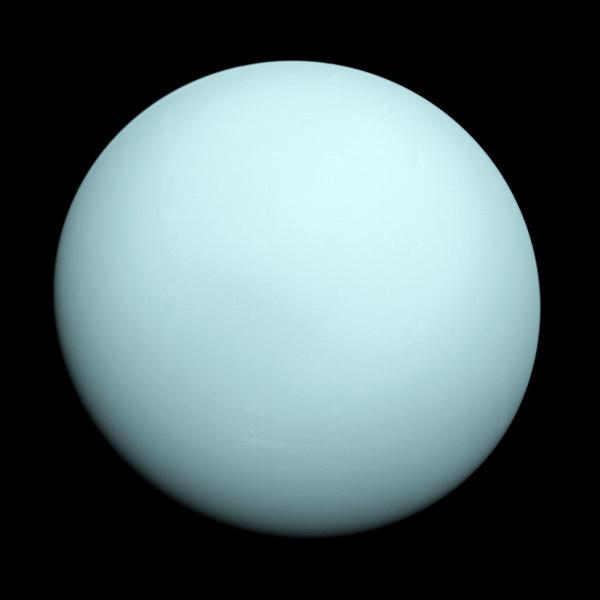Scientists from Durham University said that Uranus can be collided with a body of approximately twice the size of the Earth, which caused the unique tilt that is characterized by it.
A new research that studies the cause of the strange planet, led by Jacob Kegis, a doctoral researcher at Durham University, shows that the seventh planet of the sun may have collided with a body made of rocks or ice nearly four billion years ago.
Uranus already revolves around the sun on his side, which means that the axis of its rotation is largely tilted to the side, as its northern and southern poles are located in a place where the equator is located for most of the planets..
Uranus completes one cycle around the sun every 84 years of ground, and the pivot of the planet is 97.77 degrees, so the rotation axis equals the level of the solar system.
Scientists from Durham University, who write in Astrophysical Journal, used 50 scenarios a different effect to reach this discovery, which is likely to have collided with a huge rocky body, which made it deviant.

Scientists have also found that the collision has worked as a thermal shield for the planet since then, as it locks the heat from the outdoor surface of the planet and gives it an unusually cold outer cover..
"Uranus is on his side, and its axis indicates almost angles based on all other planets in the solar system.It is almost certain that this was due to a giant effect, but we only know very little about how this actually occurred, and how such a violent event affected the planet..
He continued: “The results we have reached confirm that the most vulnerable result is that Uranus when he was young (in terms of age) exposed a catastrophic collision with the body of the weak mass of the Earth, if not greater, which led to his collision with him and the start of the events that helped in forming the planet that we seetoday".
Earlier this year, Kejis and his team, using a giant computer, found that effects like this could have a "wide range of consequences" on the small planets and their atmosphere.
According to The North Echo magazine, this discovery was signed using the Cosma giant computer, which is part of the Dirac high -performance computing facility in Durham.
The study found that the smaller effects will lead to a much lower loss in the atmosphere of direct collision.
Uranus's tendency gives the planet very unique seasons, and one of the poles of Uranus faces the sun permanently, while the other pole is blocked from it, and a narrow tape remains near the equator who witnesses the rotation of the day and the day.
It is noteworthy that the collision is likely to have played a role in the formation of the planet's rings and satellites and may also have affected the existing satellites.